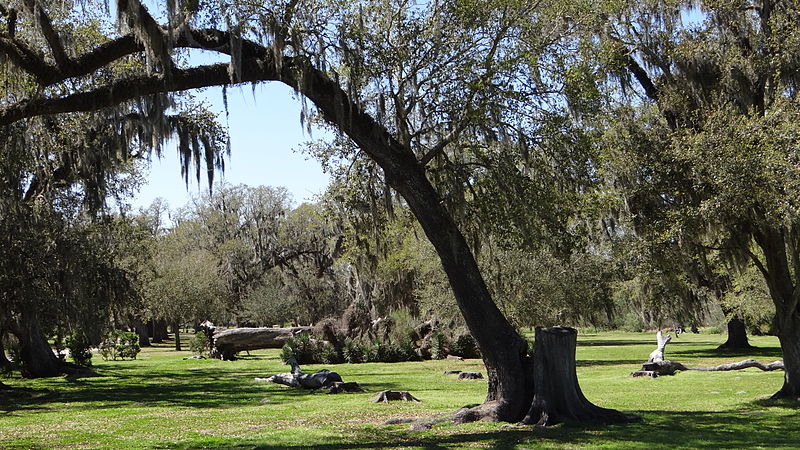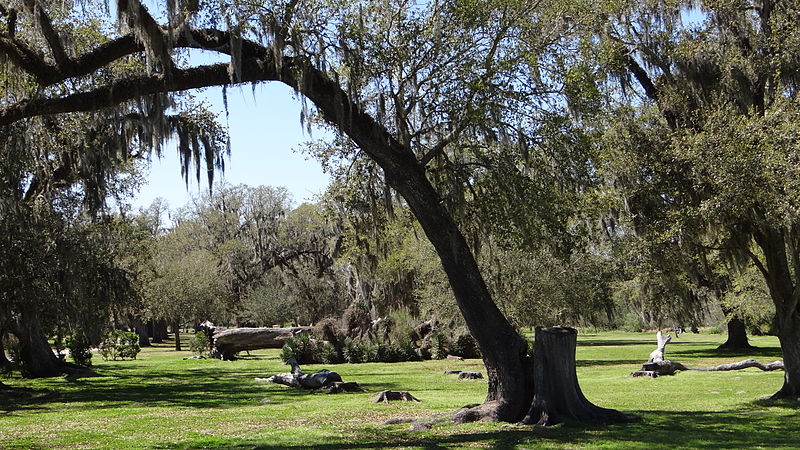Avery Island, Louisiana
In 1992, Reid Lea, a petroleum engineering student studying for his doctorate in environmental engineering at Louisiana State University, took a course in natural resource economics. Dean Lueck, a longtime PERC visiting fellow, was the instructor. One assignment was to write a book report on Free Market Environmentalism by Terry L. Anderson and Donald R. Leal.
The chapter “Ecology and Energy” told a story that hit close to home for Lea. Avery Island, located adjacent to the Louisiana Gulf Coast, is the growing site for Tabasco sauce peppers and a desired spot for oil drilling. It is composed of delicate wetlands, and is a private bird and wildlife sanctuary. On half of the island, access to oil drilling is controlled by the state, but access on the other half is at the discretion of the landowners. The landowners require that drilling on the privately controlled section of the island be adapted to avoid harming the environment by using practices like horizontal drilling and applying a drilling fluid that protects penetrated rock strata from contamination.
Lea’s response to Free Market Environmentalism, featured in the August 1992 edition of PERC Reports (read the original article here), revealed just how familiar he was with the well drilled on private land:
As I read the chapter titled “Ecology and Energy,” I was surprised to find that I had unknowingly played the role of free market environmentalist. In this chapter, the authors described how the interests of environmentalists and oil explorationists are needlessly pitted against each other due to inadequate property rights.
As the engineer who proposed and drilled that well, I did not realize at the time that well-defined rights caused me to act in a self-interested manner that also protected the environment. Following is a description of how this occurred.
…
In 1980 or 1981, I proposed that my employer, a large oil company, drill six new wells on the eastern flank of the island in the area controlled by the Mcllhennys and Averys. In spite of the long relationship with the company, the families were concerned about potential damage to their land. Their concerns arose from recent uncontrolled drilling in the marsh areas under the state’s control. The area in which I proposed to drill was particularly sensitive because it was in the middle of the Tabasco pepper fields and adjacent to the island’s egret rookery. Nonetheless, both my company and the landowners had an economic self-interest in resolving the problems and commencing drilling operations.
The oil company eventually agreed to build a twoacre drill site of specially treated lumber. All of the wells were to be drilled directionally from the same pad to be located in the middle of the pepper fields. When the drilling was completed two years later, all parties were happy with the results. Several highly productive wells had been completed and little or no residual environmental impact was created.
As I read in the book, I realized that the forces of free market environmentalism had been at work. I was anxious to allay the landowners’ concerns so that the company I worked for could drill the wells I had proposed. If drilling in a certain manner cost more money (and it did), then it was my job to determine if my employer could still make a profit (it could).
…
It is particularly interesting to know that I was the engineer proposing and drilling the wells on both sides of the island. On one half of the island, the landowner (the State of Louisiana) had no particular interest in maintaining environmental amenities on the land which it did not own. I had no economic incentive to spend the additional funds to minimize the environmental impacts. In having the authority to issue the drilling permits, the state could externalize the environmental impacts. On the other side of the island, I had to minimize or mitigate the effect of drilling on the environment because of the clear property rights. The oil company willingly incurred the extra cost of drilling because of its economic self-interest, not because of environmental concern. Only upon reading the book did I realize how my actions were influenced by the different property rights regimes.
This example clearly demonstrates the central point Terry Anderson and Don Leal make in the book Free Market Environmentalism. The authors present a convincing argument that resource misallocation and environmental degradation result from inadequate or nonexistent property rights.
Well-defined property rights, in contrast, are a key incentive in creating and maintaining the value of environmental amenities and natural resources.
25 years later, the ideas of free market environmentalism continue to inspire us to do good while doing well. Lea’s reaction to Free Market Environmentalism demonstrates how free market environmentalism just makes sense. Lea did not consider himself an environmentalist, or even go into the oil field hoping to support conservation. Instead, it was strong property rights and clear contracts that led to an outcome that benefitted the landowners, the oil company, and, most importantly, the land. Without even knowing it, just by doing what worked under the established rights, even oil drilling expressed a conservation ethic.
Earlier this year, Anderson and Leal published Free Market Environmentalism for the Next Generation. Joined by younger scholars, they continue to tell the stories of how property rights and markets incentivize good resource stewardship. Just as Lea realized his role as a free market environmentalist on Avery Island, it is important to involve the next generation in tackling environmental challenges




